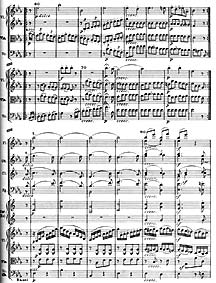
The story of Smallville is quite simple. It is the metamorphosis of Clark Kent into Superman. What is different about it, is the show takes its time to let things unfold. It begins with a brief rundown of Clark’s ship crashing in one of Smallville’s corn fields during a meteor shower, to be found by Jonathan and Martha Kent. This same event sparked what would become the town’s greatest source of intrigue, adventure, or horror, depending on who one might ask. The reason is when Clark lands, a lot of kryptonite lands with him (although logic would suggest that this is very unlikely, as the ship travelled so far on its own power and the kryptonite would have either been left behind or drifted off in a different direction-But who cares? It’s good drama and a way for Clark to not be totally invincible 100% of the time).

Season one focuses on what becomes known as “Freak of the Week” episodes. The only drawback of this is the kryptonite angle is grossly over-used. But Superman fans roll with it, because it is a good show. We are introduced to a young Lex Luthor, portrayed by Michael Rosenbaum (Possibly the best interpretation of Lex Luthor, to date) who lost his hair in the same meteor shower. Lex runs his car off of a bridge, hitting Clark along the way. Clark rescues him and starts the storyline that creates the backbone of their relationship (and the eventual destruction of their friendship). See, Lex isn’t the evil villain from past incarnations of Superman, at least not yet. Here, he is a tortured soul, having been denied a nurturing family atmosphere by his father, Lionel Luthor.
What we see is two sides of the same coin. We see a loving family environment for Clark. Clark’s parents are the epitome of the thoughtful, loving, role model parent. Although they might have made mistakes in life and during the run of the show, they are almost bullet-proof in this regard. Maybe this is a metaphor for Superman, who is bullet-proof, literally. The producers of the show chose to make Jonathan and Martha Kent younger, so they could be more integral to the stories, instead of old people sitting in a rocking chair or baking pies and nothing more. They were more able to identify and deal with situations, even being part of the action, on occasion. With Lex, we see a child with no mother and a father who is only interested in financial success, no matter the cost. Lex is made to feel inferior, as a result of his father pushing him to be a strong, ruthless, person, such as himself. In both Lionel and Lex Luthor, there is a mutual obsession driving both characters to self destruction. The seeds for good and evil are planted early on, on Smallville.
In the second season, we start to learn about Clark’s true heritage. What Smallville does, though, is it lets the story out a little at a time, to keep the viewer interested. It does so, very well, as a matter of fact. The story arcs are strategic and designed to keep the viewer watching. A bonus for Superman fans, in season two, is the addition of Christopher Reeve in the role of Dr. Virgil Swan. The creators of the show hoped this would give Smallville the credibility it deserved, in the minds of Superman fans. This “passing of the torch” was a great success, with Reeve voicing his approval of the show, in general.

Some Superman fans did not immediately warm up to Smallville (I know I didn’t-I think around season five is when I started watching). The “No Tights-No Flights” rule (it was decided Clark would never wear the costume or fly during the run of Smallville) was seen by some as a put-off. Why? Superman wore his tights and he flew. Plain and simple. How could they make a show about Superman and not have this? Well, the joke was on us. The reason was they wanted to build Clark up into Superman, instead of having him there, already. And with the ten-year span of the series, the audience got a more realistic story of this young man growing from a young kid into the hero we all know and love, unlike the brief scenes we see in Superman, the Movie. He eventually becomes known as the “Red/Blue Blur” based on his outfit colors, which were based on the colors of Superman’s costume.

Throughout the show, Superman Iconography is practically littered all over the place. One episode focuses on an election for school president. One of the students has a notebook with a drawing of himself in a raw version of the Superman suit. In the pilot, itself, Clark is seen with an “S” spray-painted on his chest. Later, when he defies Jor-El, the crest is burned into his chest, although without the “S.” These are small treats for loyal fans of Superman. Add to this, the inclusion of past Super-Alumni, like Christopher Reeve, Margot Kidder, Dean Cain, Mark McClure, Helen Slater, Terrence Stamp, Teri Hatcher, and last but not least Annette O’Toole who plays his mother, Martha Kent. Perhaps this was a small gesture to fans for denying them the tights and flights? Who knows?
What we have is the life story of one of America’s oldest super heroes. And in the finale, he finally dons the suit and zips up in the sky to save humanity for the very first time, as the proper Superman. If there are any Superman fans that have refused to watch this show, they are really missing something special. All of the cast are excellent in their roles. If there is to be anything negative to be said, it might be the Clark/Lana on again/off again relationship. It simply went on a little too long. That is hardly a reason to not watch the show.


















